If it ever feels like your living room could use a truly out-of-this-world centrepiece, this might be the perfect purchase.
The largest Martian meteorite ever found on Earth is set to go on sale this week.
The whopping 25-kilogram rock, named NWA 16788, will be sold at a special natural history-themed auction at Sotheby’s in New York this Wednesday.
But owning a piece of the red planet comes at an astronomical cost, as this hunk of rock is expected to fetch £1.5-3 million ($2-4 million).
With two days before the sale ends, the current bid already stands a staggering £1.2 million ($1.6 million).
That sky-high price is a reflection of just how rare and unique this meteorite really is.
Measuring 15 by 11 inches by 6 inches (38 by 28 by 15 cm), it is almost 70 per cent larger than any previous asteroid ever found.
According to Sotheby’s, this represents seven per cent of all Martian material currently on Earth.
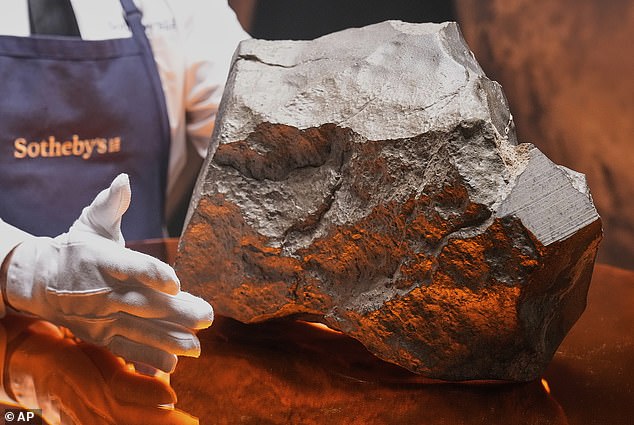
The largest Martian meteorite on Earth (pictured) will go on sale at Sotheby’s in New York later this week
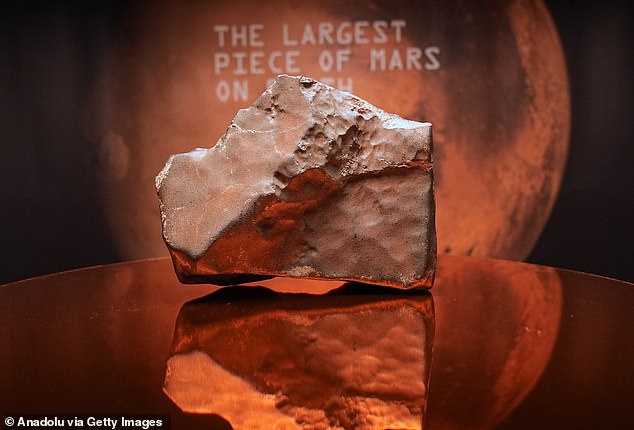
The enormous space rock is expected to fetch £1.5-3 million ($2-4 million) at auction on Wednesday
Martian meteorites make the 140-million-mile journey to Earth after being launched into space by colossal asteroid impacts.
Since this process requires such a powerful impact, Martian meteorites are exceptionally rare compared to other types of space rocks.
So far, there are only 400 officially confirmed Martian meteorites on Earth compared to 77,000 meteorites of other types.
This piece of rock is so large that astronomers believe there are only 19 craters on Mars large enough to have launched it out of orbit.
Cassandra Hatton, vice chairman for science and natural history at Sotheby’s, says: ‘This Martian meteorite is the largest piece of Mars we have ever found by a long shot.
‘So it’s more than double the size of what we previously thought was the largest piece of Mars.’
NWA 16788 was found by a meteorite hunter in Niger in 2023, according to Sotheby’s.
The rock’s glassy-smooth surface suggested it had been burned by the intense heat created as it passed through the atmosphere.
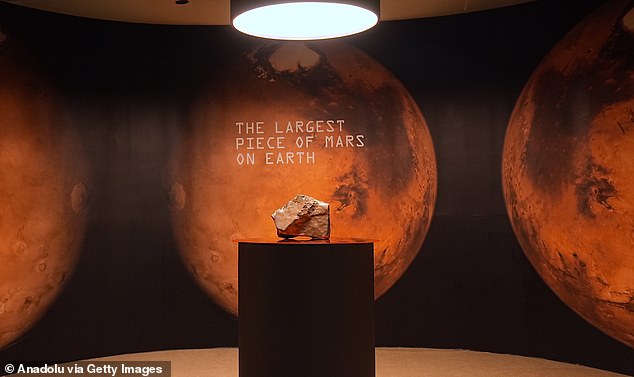
The rock is believed to have been ejected from Mars after a huge asteroid collision sent it hurtling through space on the 140-million mile journey to Earth
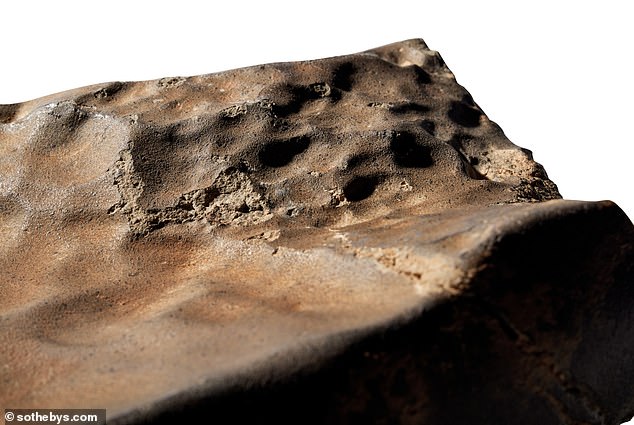
The rock weighs a staggering 25 kilograms, making up almost seven per cent of all Martian material on Earth
‘So that was their first clue that this wasn’t just some big rock on the ground,’ Ms Hatton says.
Based on the lack of surface weathering, Sotheby’s also believes that it had not been in the desert very long, making it a relative newcomer to Earth.
Samples of the rock were then sent to a lab where its chemical composition was compared to analysis done by the NASA Viking Lander in 1976, confirming it was Martian in origin.
This analysis also revealed that a large part of the rock is made up of a type of glass called maskelynite, formed by the intense heat and pressure of an asteroid striking the Martian surface.
The rest of the rock’s original material is made up of ‘olivine-microgabbroic shergottite’, a type of Martian rock formed from the slow cooling of Martian magma.
Only 5.4 per cent of all Martian asteroids are of the same material, making this an even rarer find.
The meteorite was previously on exhibit at the Italian Space Agency in Rome, but Sotheby’s did not disclose the owner.
This same auction will include the sale of a number of other space rocks, including a 2.5-kilogram sphere of moon rock and shrapnel from a meteor which exploded over Siberia in 1947.
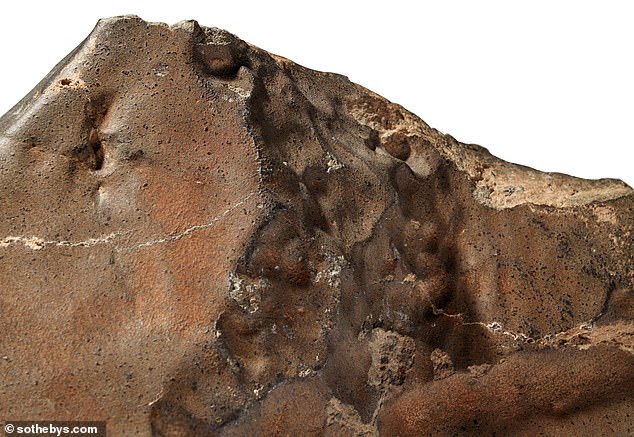
The rock’s smooth surface indicates that it was burned by entry into Earth’s atmosphere and had not been on the planet’s surface for long before it was found
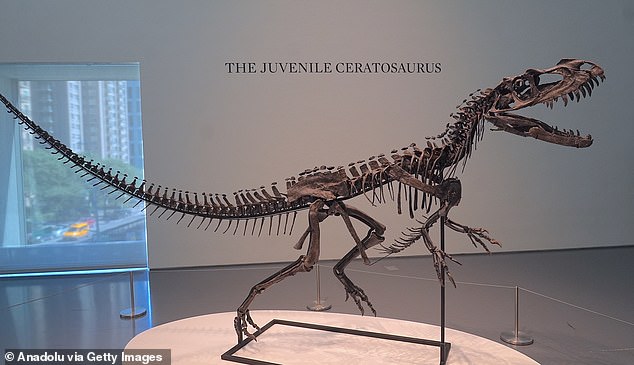
This natural history-themed auction will also see the sale of a juvenile Ceratosaurus fossil, expected to sell for $3-4.5 million ($4-6 million)
The sale’s flagship item is the mounted fossil skeleton of a juvenile Ceratosaurus.
Measuring nearly 11 feet (three metres) long and standing at six feet (two metres) tall, this fierce predator lived 154-149 million years ago in the late Jurassic period.
Ceratosaurus dinosaurs were bipeds with short arms that appeared similar to the Tyrannosaurus rex, but smaller.
The juvenile Ceratosaurus nasicornis skeleton was found in 1996 near Laramie, Wyoming, at Bone Cabin Quarry, a gold mine for dinosaur bones.
Specialists assembled nearly 140 fossil bones with some sculpted materials to recreate the skeleton and mounted it so it’s ready to exhibit, Sotheby’s says, and is expected to fetch between $3-4.5 million ($4-6 million).












